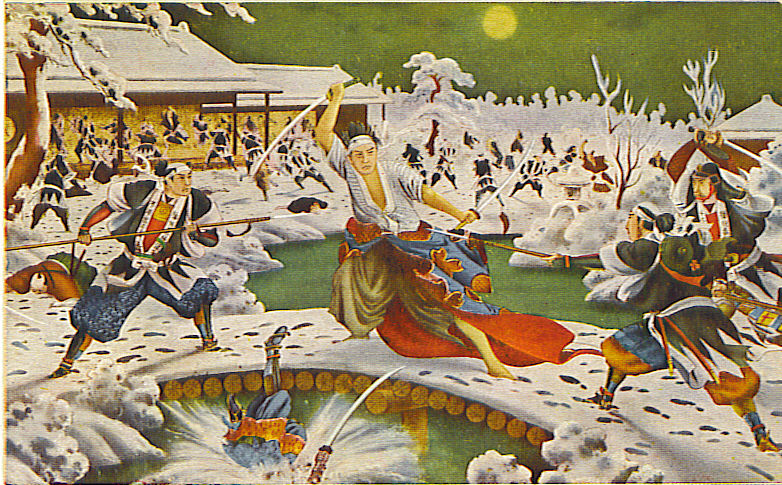The 47 Ronin: A Samurai Story of Vengeance and Honor
In the heart of Edo-era Japan, where honor was sacred and duty a way of life, a dramatic tale of vengeance unfolded that would echo for centuries. The story of the 47 Ronin—masterless samurai who avenged their lord—embodies the warrior code of bushido and remains one of Japan’s most revered historical legends.
The Spark: Lord Asano’s Offense
In 1701, Lord Asano Naganori of the Ako Domain was summoned to Edo (modern-day Tokyo) to fulfill ceremonial duties in the shogun’s court. He was to host imperial envoys under the guidance of Kira Yoshinaka, a powerful court official.
Kira, known for his arrogance and expectation of lavish bribes, took offense at Asano’s perceived lack of respect. After enduring repeated insults, Asano snapped. He drew his sword inside Edo Castle—a grave offense—and slashed Kira, who survived.
Asano was arrested on the spot. The shogun declared he had broken the law by drawing a weapon within the shogunate’s palace and ordered Asano to commit seppuku, ritual suicide. His lands were confiscated, and his samurai became ronin—masterless and dishonored.
Becoming Ronin
Now without a master, 300+ samurai from Ako faced disgrace and unemployment. Yet 47 of them, led by Ōishi Yoshio (Kuranosuke), secretly vowed to avenge their lord. They knew retaliation was illegal and punishable by death, but their devotion overrode all fear.
Ōishi disbanded the men and adopted the appearance of a broken, drunken ronin to throw off suspicion. The others scattered, working as merchants and monks—blending into the background while watching Kira closely.
For nearly two years, they waited. Then, in the early hours of December 14, 1702, they struck.
The Night Attack
The 47 Ronin converged on Kira’s heavily guarded Edo mansion. They split into two teams: one entered through the front gate, the other over the back wall.
They neutralized guards silently and methodically, shouting that they were not thieves but loyal samurai avenging Lord Asano. After searching for nearly an hour, they found Kira hiding in a storage shed. He refused to identify himself.
Ōishi examined his face, found an old scar from Asano’s blade, and confirmed his identity. Ōishi offered Kira the chance to die honorably by seppuku, but the cowardly official declined. Ōishi then decapitated him.
The ronin washed Kira’s head and presented it at Asano’s grave at Sengaku-ji Temple, alongside a token of their loyalty.
Surrender and Judgment
After fulfilling their mission, the 47 Ronin turned themselves in. Edo society was torn—some viewed them as criminals, others as heroes.
The shogunate faced a dilemma. If they punished the ronin harshly, they would offend samurai across the land. If they pardoned them, they would undermine the rule of law.
In the end, they were allowed to die honorably by seppuku. On February 4, 1703, all 46 living ronin (one had been sent away on a mission and later pardoned) took their own lives. They were buried next to their master at Sengaku-ji.
Legacy and Impact
The tale of the 47 Ronin spread quickly through Japan. Plays, books, and eventually films immortalized their sacrifice. Even today, their graves are a pilgrimage site for Japanese citizens honoring duty and loyalty.
The story raises enduring questions: Is it right to break the law for justice? Is loyalty worth death? The ronin didn’t just act—they embodied a philosophy.
In Japanese culture, they are not mere avengers—they are symbols of bushido.
Visit Sengaku-ji Today
The graves of the 47 Ronin still stand in Tokyo. Visitors leave incense and notes of respect. Their memory lives not just in stone—but in the soul of a nation.

Leave a Reply